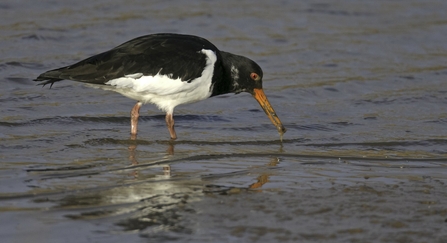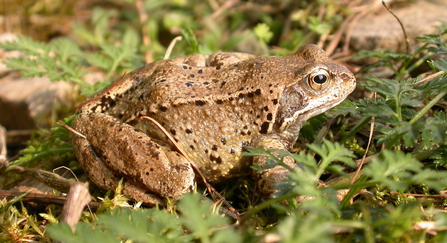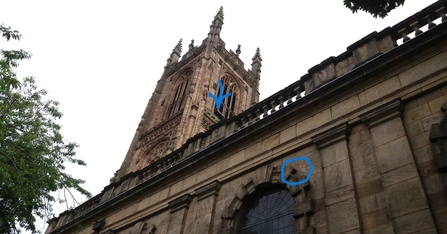Hi again
As February approaches there are more signs of spring to be seen and listened for.
I heard my first drumming great spotted woodpecker this week and soon we can expect great crested grebes to begin their dances in which the pair face each other, weed in beaks, and shake their heads from side to side - watch a pair: Great crested grebes courtship dance | WWT .
Wild Update - January 2025

Great crested grebes - Margaret Holland
At my local lakes, oystercatchers have returned from their winter sojourn somewhere on the coast.
Breeding inland is a relatively new phenomenon for this species, encouraged no doubt by the huge increase in gravel pits which provide islands on which they can nest safe from ground predators. It won't be long before their noisy display flights begin in earnest.
And, as the climate changes, summer migrants are returning earlier meaning that we can expect the first sand martins to show up before the end of next month.

Oystercatcher (Haematopus ostralegus) Chris Gomersall
Garden flowers
In gardens, winter aconites are already adding a splash of yellow to the white of snowdrops.
And hellebores are beginning to flower, providing a nectar source for early bumblebees.

Snowdrops - Derek Moore
Bullfinch delight
After finding a dead bullfinch which had flown into a window not long ago, I was delighted to see a pair in the garden this week.
They were nipping off the emerging leaves of one of our many honeysuckles which climbs up through a large Cotoneaster. I was aware that bullfinches eat flower and leaf buds but not that they would also take the opening leaves themselves.
Years ago many hundreds of bullfinches were shot in apple orchards each spring until it became unlawful to do so.

Bullfinch - Amy Lewis
Border control
In the last couple of weeks I've been removing dead perennials from the flower borders in the garden.
While doing so, I came across a raised heap of matted leaves and moss and immediately realised what it was likely to be.
A few years ago, while raking another border I accidentally disturbed a hibernating hedgehog. It had made a 'nest' exactly like the one I found last week. It will be interesting to see when the incumbent emerges.
Frogs will soon a-wooing go....
And February is the month in which the first frogspawn will appear in the county. In the south west of the UK, it can be laid as early as November or December but up here it is nearly always later.

Common frog - Philip Precey
Many years ago I used the Derby Telegraph and BBC Radio Derby to request sightings of frogspawn. We were overwhelmed with over 400 phone calls (this was pre-internet). If such a request was made today, I rather doubt there'd be even fifty responses such has been the demise of both frogs and garden ponds.
Brave or foolish?
In June 2016, while watching the peregrines nesting on Derby Cathedral, I noticed a nest perched precariously on stonework surrounding one of the windows. It proved to be the active nest of a pair of mistle thrushes.
These birds usually choose discrete nest sites in trees but despite the presence of suitable ones nearby and potential predators just above, this pair chose a very exposed location.
In the photo below you can just see the nest circled and above it on the tower, the nest platform used by our peregrine falcons (arrowed).

Mistle thrush nest circled and peregrine platform arrowed. NB
Speaking of peregrines, the cathedral pair will soon begin displaying and scraping a new 'nest' in the gravel on that platform.
The annual abseil down to clean the gravel and reset the cameras is planned for whenever the weather has warmed up and there's no wind!
(If you are new to the county, check out the live web cams and blog: Derby Cathedral Peregrine Project - 2025 . Since the web cams were first installed in 2007, the cams and blog have received in excess of four million hits, with over 320,000 hits last summer alone.)
And February will witness the vibrant song of the mistle thrush, usually delivered from the very tops of tall trees and at full volume.
Listen to one here: XC893553 Mistle Thrush (Turdus viscivorus) :: xeno-canto
Dip dip dippers
If you are walking along one of our limestone rivers in the next few weeks, listen out for the chattering song of the dipper.
Dippers start to sing really early, marking out their territories along the river bank. Despite its obvious white breast, you'll often hear the song before you spot the bird. Listen to one here: XC709606 White-throated Dipper (Cinclus cinclus) :: xeno-canto

Dipper (Cinclus cinclus) - Andy Rouse
